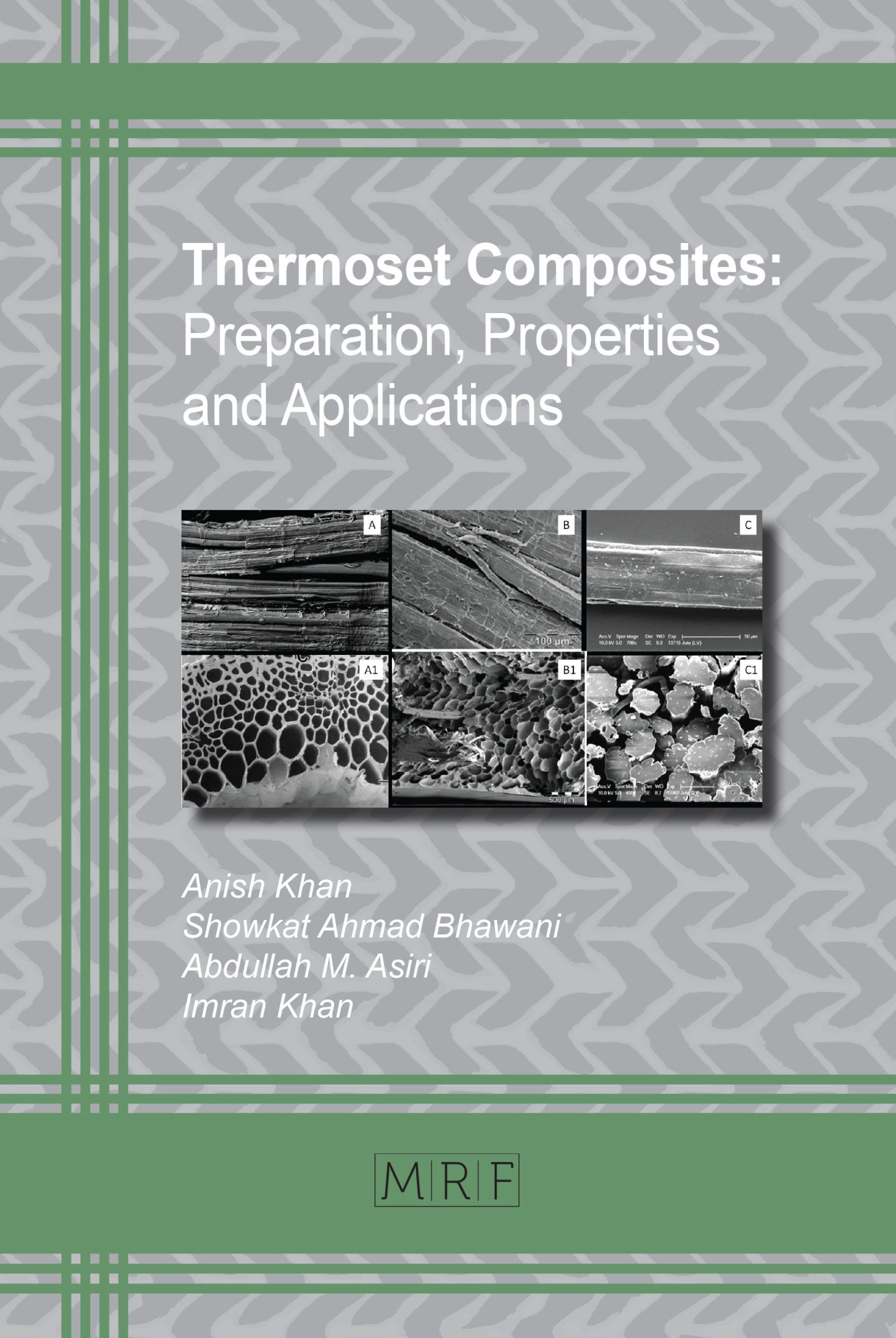Experimental and Analysis of Jute Fabric with Silk Fabric Reinforced Polymer Composites
M.R. Sanjay, K.N. Bharath, R. Vijay, D. Lenin Singaravelu, A. Vinod, M. Jawaid, Anish Khan
In the present work, mechanical and physical properties of the fabrics extracted from jute are determined and compared with silk fabric. The specimen preparation and testing are carried out as per ASTM standards. Jute and silk based composite materials are fabricated using the hand lay-up technique as per stacking sequence. Further, these jute and silk fabrics were chemically treated and the effect of this treatment on fabric strength is studied. All the composite laminates were prepared with the proportion of 60-40%. Tests like tensile test, bending test, impact test, water absorption test of jute and silk fabric reinforced epoxy based composite laminates were conducted and evaluated. The behaviour of the composite under different tests was analyzed with the help of performance curves. Water absorption test plots for different periods indicated that jute and silk based epoxy composites offer better resistance. SEM analysis shows the fracture surface of the jute and silk fabric–matrix interface. On the other hand, ANOVA was used in one way to find the significant difference between the best mechanical composite specimens. The ANSYS analysis was used to gain knowledge of the stress distribution during the tensile and flexural tests of the composites. The results obtained from various tests show that these composites can potentially replace automobile parts like bumpers, doors, and chemical containers.
Keywords
Jute, Silk, Mechanical Properties, Water Absorption, SEM, ANOVA, ANSYS, Epoxy
Published online 10/1/2018, 15 pages
DOI: http://dx.doi.org/10.21741/9781945291876-3
Part of the book on Thermoset Composites
References
[1] M. R. Sanjay, P. Madhu, M. Jawaid, S. Pradeep, P. Senthamaraikannan, S. Senthil, Characterization and Properties of Natural Fiber Polymer Composites: A Comprehensive Review, J. Clean. Produc. 172 (2018) 566-581. https://doi.org/10.1016/j.jclepro.2017.10.101
[2] M. R Sanjay, B. Yogesha, Studies on Natural/Glass Fiber Reinforced Polymer Hybrid Composites: An Evolution, Mater. Tod. Proc. 4 (2017) 2739–2747. https://doi.org/10.1016/j.matpr.2017.02.151
[3] O. Fruk, A. K. Bledzki, H. Fink, M. Sain, Biocomposites reinforced with natural fibers: 2000–2010. Prog. Poly. Sci. 37(2012) 1552–1596. https://doi.org/10.1016/j.progpolymsci.2012.04.003
[4] M. R. Sanjay, G. R. Arpitha, L. Laxmana Naik, K. Gopalakrisha, B. Yogesha, Applications of Natural Fibers and Its Composites: An Overview. Natur. Resou. 7 (2016) 108–114. https://doi.org/10.4236/nr.2016.73011
[5] D. Saravana Bavan, G. C. Mohan Kumar, Potential use of natural fiber composite materials in India, J. Reinf. Plastic. Compos. 29 (2010) 3600–3613. https://doi.org/10.1177/0731684410381151
[6] M. R Sanjay, B. Yogesha, Studies on Mechanical Properties of Jute/E-Glass Fiber Reinforced Epoxy Hybrid Composites, J. Min. Mater. Charact. Eng. 4(2016) 15–25. https://doi.org/10.4236/jmmce.2016.41002
[7] A. K. Mohanty, M. A. Khan, G. Hinrichsen, Influence of chemical surface modification on the properties of biodegradable jute fabrics-polyester amide composites, Compos A: App. Sci. Manuf. 31 (2000) 143- 150. https://doi.org/10.1016/S1359-835X(99)00057-3
[8] M. A. Mansur, M. A. Aziz, Study of Bamboo-Mesh Reinforced Cement Composites, Int. Cement Compos. Lightweight Concrete, 5 (1983)165–171. https://doi.org/10.1016/0262-5075(83)90003-9
[9] S. Luo, A. N. Netravali, Interfacial and mechanical properties of environment-friendly ‘green’ composites made from pineapple fibers and polyhydyoxybutyrate-co-valerate) resin, J. Mater. Scie. 34 (1999) 3709-3719. https://doi.org/10.1023/A:1004659507231
[10] K. Raghu, P. NoorunnisaKhanam, S. Venkata Naidu, Chemical resistance studies of silk/sisal fiber reinforced unsaturated polyester-based hybrid composites, J. Reinf. Plastic. Compos. 29 (2010) 343–345. https://doi.org/10.1177/0731684408097770
[11] H. Kweon, Hyun Chul Ha, In Chul Um, Young Hwan Park, Physical properties of silk fibroin/chitosan blend films, J. App. Polym. Scie. 80 (2001) 928-934. https://doi.org/10.1002/app.1172
[12] S. M. Lee, D. Cho, W. H. Park, S. G. Lee, S. O. Han, T. DrzalL, Novel silk/poly (butylenes succinate) biocomposites: the effect of short fiber content on their mechanical and thermal properties, Compos. Scie. Tech. 65 (2005) 647-657. https://doi.org/10.1016/j.compscitech.2004.09.023
[13] S. Annamaria, R. Maria, M. Tullia, S. Silvio, C. Orio. The microbial degradation of silk: a laboratory investigation, Inter. Biodeterior. Biodegrad. 42 (1998) 203-211. https://doi.org/10.1016/S0964-8305(98)00050-X
[14] A. N. Shah, S. C. Lakkad, Mechanical properties of jute reinforced plastics, Fib. Scie. Techn. 15 (1981) 41–46. https://doi.org/10.1016/0015-0568(81)90030-0
[15] A. U. Ude, A. K. Ariffin, C. H. Azhari, An Experimental Investigation on the Response of Woven Natural Silk Fiber/Epoxy Sandwich Composite Panels Under Low Velocity Impact, Fib. Poly. 14 (2013) 127–132.
[16] S. P. Priya, S. K. Rai, Studies on the mechanical performance of PMMA toughened epoxy–silk and PC toughened epoxy–silk fabric composites. J. Reinf. Plastic. Compos. 25(2006) 33–41. https://doi.org/10.1177/0731684406055453
[17] K.S. Ahmed, S. Vijayarangan, Tensile, flexural and interlaminar shear properties of woven jute and jute-glass fabric reinforced polyester composites. J. Mater. Process. Techn. 207(2008) 330–335. https://doi.org/10.1016/j.jmatprotec.2008.06.038
































